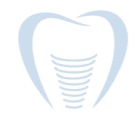
Millions of Americans struggle nightly with obstructive sleep apnea, but many don’t realize that the solution might lie not in a bedside machine, but in precisely repositioning their jaw structure. Corrective jaw surgery, also known as orthognathic surgery, is emerging as a highly effective permanent treatment for sleep apnea patients who want freedom from CPAP machines and oral appliances.
While CPAP therapy remains the gold standard for sleep apnea management, it’s not ideal for everyone. Issues with mask fit, claustrophobia, travel inconvenience, and partner disruption lead many patients to seek alternative solutions. For South Bay residents whose sleep apnea stems from jaw positioning issues, corrective jaw surgery can provide life-changing results with success rates exceeding 90% in properly selected candidates.
Understanding how jaw structure affects breathing during sleep—and how surgical correction can permanently resolve these issues—opens new possibilities for restoring healthy sleep patterns and improving overall quality of life for Torrance area patients and their families.
Understanding the Sleep Apnea-Jaw Connection
The relationship between jaw position and sleep apnea is more significant than many people realize. Your jaw structure directly affects the size and stability of your upper airway, making anatomical factors crucial in determining breathing patterns during sleep.
- Airway Space Dynamics: When the upper and lower jaws are positioned too far back (retrognathic), they reduce the three-dimensional space available for airflow. This creates a narrow airway that’s more susceptible to collapse during sleep when muscle tone naturally decreases.
- Tongue Position Impact: Jaw recession affects tongue posture and can cause the tongue to fall backward during sleep, contributing to airway obstruction. Proper jaw positioning provides adequate space for the tongue and prevents it from blocking the throat.
- Soft Tissue Support: Well-positioned jaws provide better structural support for surrounding soft tissues, including the soft palate and throat muscles. This support helps maintain airway patency throughout the sleep cycle.
- Facial Growth Patterns: Genetic factors and childhood development can result in jaw growth patterns that predispose individuals to sleep apnea. These structural issues often become more pronounced with age as tissues lose elasticity.
Types of Corrective Jaw Surgery for Sleep Apnea
Different surgical approaches address various anatomical contributions to sleep apnea, with treatment plans customized based on individual patient anatomy and the specific location of airway obstruction.
- Maxillomandibular Advancement (MMA): This comprehensive procedure advances both the upper jaw (maxilla) and lower jaw (mandible) forward simultaneously. MMA is considered the gold standard surgical treatment for sleep apnea, with success rates of 85-100% in eliminating or significantly reducing sleep apnea symptoms.
- Mandibular Advancement: In cases where the lower jaw recession is the primary contributor to sleep apnea, advancing only the mandible can provide significant improvement while requiring less complex surgery than full MMA procedures.
- Maxillary Expansion: Some patients benefit from widening the upper jaw to increase nasal breathing capacity and improve overall airflow dynamics. This procedure can be combined with advancement techniques for comprehensive treatment.
- Genioglossus Advancement: This targeted procedure advances the attachment point of tongue muscles to prevent the tongue from falling backward during sleep. It’s often combined with other jaw surgeries for optimal results.
Candidates for Sleep Apnea Jaw Surgery
Not every sleep apnea patient is an appropriate candidate for corrective jaw surgery. Proper patient selection is crucial for achieving optimal outcomes and ensuring patient safety and satisfaction.
- Anatomical Factors: Ideal candidates have documented jaw recession or deficiency (retrognathia) that contributes to their sleep apnea. Comprehensive imaging and sleep study analysis help determine whether jaw positioning is a significant factor in the patient’s condition.
- CPAP Intolerance or Failure: Many surgical candidates have tried CPAP therapy but experienced poor compliance due to claustrophobia, mask fit issues, or lifestyle factors. Others may have achieved only partial improvement with CPAP treatment.
- Severity Assessment: Moderate to severe sleep apnea patients (AHI >15-20) typically see the greatest benefit from surgical intervention. Patients with mild sleep apnea may achieve adequate control with less invasive treatments.
- Age and Health Considerations: While there’s no strict age limit, younger patients often experience better outcomes due to superior healing capacity and bone quality. Overall health status and ability to tolerate general anesthesia are important factors.
- Realistic Expectations: Successful candidates understand the surgical process, recovery requirements, and expected outcomes. They’re committed to following post-operative care instructions and maintaining long-term oral health.
The Surgical Process and Techniques
Modern corrective jaw surgery for sleep apnea utilizes advanced planning technologies and surgical techniques to achieve precise repositioning while minimizing complications and recovery time.
- Pre-Surgical Planning: Three-dimensional CT imaging allows surgeons to analyze jaw position, measure airway dimensions, and plan precise movements. Virtual surgical planning helps predict outcomes and optimize surgical approach.
- Surgical Approach: Surgery is performed under general anesthesia through intraoral incisions, avoiding external facial scars. Specialized instruments allow precise bone cuts and repositioning according to the pre-surgical plan.
- Jaw Repositioning: The surgeon carefully advances the jaws forward and may also make vertical or rotational adjustments to optimize both airway opening and dental occlusion. Computer navigation systems can guide precise positioning.
- Fixation Methods: Small titanium plates and screws secure the jaws in their new positions. These fixation devices are biocompatible and typically remain permanently without causing problems.
- Immediate Results: Airway improvement is often apparent immediately after surgery, though full healing and optimal results develop over several months as swelling resolves and tissues adapt.
Recovery and Healing Timeline
Understanding the recovery process helps patients prepare adequately and maintain realistic expectations throughout their healing journey.
- Initial Recovery Phase: The first 1-2 weeks involve significant facial swelling and the need for a liquid diet. Pain medication and anti-inflammatory drugs help manage discomfort during this crucial healing period.
- Dietary Progression: Patients typically progress from liquids to soft foods over 4-6 weeks, then gradually return to normal diet as healing permits. Adequate nutrition is essential for proper bone healing and recovery.
- Activity Restrictions: Physical activity limitations last 6-8 weeks to prevent complications and ensure proper bone healing. Patients can usually return to work within 2-3 weeks, depending on their occupation.
- Follow-up Care: Regular appointments monitor healing progress, address concerns, and track sleep improvement. Sleep studies are typically repeated 3-6 months after surgery to document improvement.
- Long-term Healing: Complete bone healing takes several months, with final results apparent 6-12 months after surgery. Most patients experience significant sleep improvement within the first few months.
Expected Outcomes and Success Rates
Corrective jaw surgery for sleep apnea offers excellent success rates when performed on properly selected candidates, with most patients experiencing dramatic improvement in sleep quality and related health issues.
- Sleep Study Improvements: Studies show that 85-100% of patients achieve significant improvement in their apnea-hypopnea index (AHI), with many reaching normal levels below 5 events per hour.
- Symptom Resolution: Patients typically report elimination of loud snoring, reduction in daytime fatigue, improved concentration, and better overall quality of life within months of surgery.
- Cardiovascular Benefits: Treating sleep apnea through jaw surgery can reduce risks of hypertension, heart disease, and stroke associated with untreated sleep-disordered breathing.
- Partner Satisfaction: Family members often report improved sleep quality due to elimination of disruptive snoring and restless sleep behaviors.
- Long-term Stability: Unlike CPAP therapy, which requires nightly compliance, surgical correction provides permanent anatomical improvement that doesn’t depend on patient adherence to treatment.
Comparing Surgery to Other Treatment Options
Understanding how corrective jaw surgery compares to other sleep apnea treatments helps patients make informed decisions about their care.
- CPAP Therapy Comparison: While CPAP is highly effective when used consistently, many patients struggle with compliance issues. Surgery eliminates the need for nightly equipment and provides permanent improvement.
- Oral Appliance Benefits: Dental sleep appliances can be effective for mild to moderate sleep apnea but may not provide adequate treatment for severe cases. Surgery addresses the underlying anatomical cause.
- Soft Tissue Surgery Limitations: Procedures like UPPP (uvulopalatopharyngoplasty) address only one level of obstruction and have lower success rates than jaw advancement surgery, particularly for severe sleep apnea.
- Lifestyle Modification Support: While weight loss and positional therapy can help, they may not fully address anatomical factors. Surgery can provide the foundation for optimal treatment outcomes.
Addressing Common Concerns and Questions
Many patients have concerns about jaw surgery that prevent them from considering this highly effective treatment option for their sleep apnea.
- Facial Appearance Changes: Modern surgical techniques focus on improving facial balance and aesthetics while correcting breathing problems. Most patients experience enhanced facial appearance with improved jaw positioning.
- Orthodontic Coordination: Many patients require braces before and after surgery to ensure optimal teeth alignment. Close coordination between the surgeon and orthodontist ensures excellent functional and aesthetic results.
- Pain Management: Advanced pain control techniques, including long-acting local anesthetics and multimodal pain management protocols, help minimize discomfort during recovery.
- Return to Normal Function: While recovery requires patience, most patients achieve normal jaw function and comfortable eating within 6-8 weeks after surgery.
- Insurance Coverage: Many insurance plans cover corrective jaw surgery when medically necessary for sleep apnea treatment, particularly when conservative treatments have failed.
The Torrance Advantage for Sleep Apnea Surgery
The South Bay area offers unique advantages for patients considering corrective jaw surgery for sleep apnea, with access to experienced specialists and comprehensive care.
- Experienced Surgical Team: Access to board-certified oral and maxillofacial surgeons with extensive experience in complex jaw surgery and sleep apnea treatment.
- Comprehensive Evaluation: Thorough assessment including sleep study analysis, imaging, and airway evaluation ensures appropriate candidate selection and optimal surgical planning.
- Advanced Technology: State-of-the-art surgical planning software and navigation systems enable precise surgery with predictable outcomes and minimal complications.
- Coordinated Care: Collaboration with sleep medicine specialists, orthodontists, and other healthcare providers ensures comprehensive treatment approach and optimal results.
Life After Sleep Apnea Surgery
Successful corrective jaw surgery for sleep apnea provides profound improvements that extend far beyond better sleep, affecting virtually every aspect of daily life.
- Energy and Alertness: Patients often report dramatic increases in daytime energy levels, mental clarity, and overall productivity within weeks of achieving better sleep quality.
- Relationship Benefits: Partners frequently express relief and gratitude for the elimination of disruptive snoring and improved sleep environment for the entire household.
- Health Improvements: Treating sleep apnea reduces cardiovascular risks, helps with weight management, and can improve management of related conditions like diabetes and hypertension.
- Professional Advantages: Increased alertness, better mood, and improved cognitive function often translate to enhanced job performance and career opportunities.
- Activity Participation: Better sleep and increased energy levels enable patients to participate more fully in physical activities, social events, and family life.
Taking the Next Step Toward Better Sleep
If you’re struggling with sleep apnea and seeking a permanent solution that goes beyond nightly CPAP therapy, corrective jaw surgery may offer the freedom and health benefits you’ve been looking for. This sophisticated procedure requires careful evaluation and experienced surgical expertise to achieve optimal results.
At Torrance Oral Surgery and Dental Implant Center, Dr. Benjamin Yagoubian has particular expertise in orthognathic surgery and understands the complex relationship between jaw positioning and sleep-disordered breathing. His comprehensive approach combines advanced surgical techniques with thorough patient education to ensure optimal outcomes.
The journey to better sleep and improved health begins with a thorough evaluation to determine whether you’re a candidate for corrective jaw surgery. During your consultation, we’ll review your sleep study results, analyze your jaw structure through advanced imaging, and discuss all treatment options to help you make an informed decision about your care.
Don’t let sleep apnea continue to impact your health, relationships, and quality of life. Contact Torrance Oral Surgery and Dental Implant Center today to schedule a consultation and discover whether corrective jaw surgery can provide the permanent solution you need for restful sleep and renewed vitality in the South Bay area.
Posted on behalf of
23451 Madison St #120
Torrance, CA 90505
Phone: (310) 373-0667
Monday - Friday 8AM - 5PM
